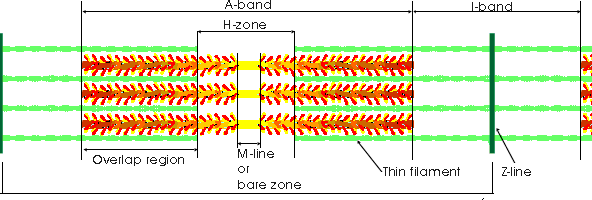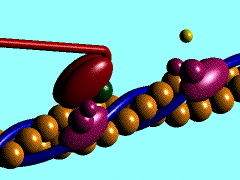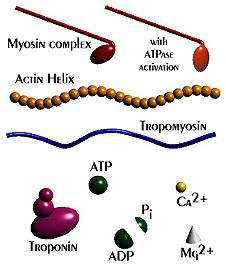 |
All skeletal muscles exhibit four characteristics:
|
| Skeletal Muscle Organization
|
| Skeletal Muscle Cell Anatomy |

|
|
Filament Structure
|
| There are three filament types found within a sarcomere: myosin, actin, and elastic. |
|
|
|
& The Sliding Filament Theory of Contraction |
| The following events occur from the time of action potential to mechanical activity. 1. An action potential fires at the neuromuscular junction. 2. Neurotransmitter is released from the axonal terminal, diffuses across the synaptic cleft, and attaches to receptors on the sarcolemma. 3. The action potential travels down the sarcolemma and down the T-tubules. 4. Calcium ions are released from the sarcoplasmic reticulum and they bind to troponin. This causes a change in shape in troponin, removing the blocking action of tropomyosin exposing the actin binding sites. 5. Myosin cross bridges to become activated and attach to the actin binding sites. 6. The myosin head changes shape and pulls on the actin sliding it to the center of the sarcomere. ATP energy is used to accomplish this step. 7. A new ATP molecule binds to the myosin head. The cross bridge detaches from the actin. The new ATP molecule has caused the myosin head to change shape and the head can now reattach to the actin to repeat the process in step 6. 8. Contraction continues until the calcium ions are removed by active transport back into the sarcoplasmic reticulum. 9. Once the calcium is removed from troponin, tropomyosin moves to its original shape and blocks the actin active sites causing muscle relaxation. |
 |
 |
| There are 2 main categories of contractions: isotonic and isometric. |
|
|
|
|
|
|
|
|
Muscle Animation II